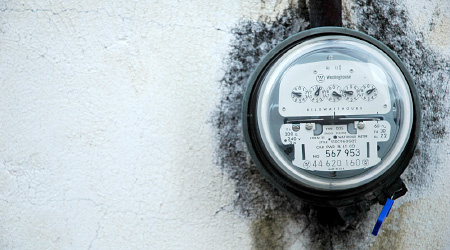How To Cut Your Gas Bill

Every year the price of commodities goes up including heating oil and natural gas. When winter rolls around you have two options; either live in a cold dark world where you can see your breath or pay high monthly gas bills. Heating is a luxury most of us cannot afford to do without therefore any tips to help cut your gas bill can go a long way to relieving stress and freeing up resources for other more worthwhile endeavors.
One of the easiest and quickest things that can be done is to lower the thermostat when it is not being used. Many people forget to lower the thermostat when they go to work or leave the house for extended periods of time. By purchasing a programmable thermostat you can have the temperature adjust a few degrees lower during the day and then have it kick in about the time you get home. You can also use it to automatically lower the temperature at night when everyone is asleep. By using flannel sheets or adding additional covers you can stay warm while the house gets a little cooler saving you money. Programmable thermostats are no longer cost prohibitive and should be required in all residential construction due to the cost-saving effectiveness.
Everyone likes to take hot showers but the question is how much are you willing to pay for the luxury of standing under hot water for 30 to 45 minutes? Adjusting the hot water heater down 5 to 10 degrees can save a few extra dollars per month which can add up to significant savings over the course of a year. Try incrementally lowering the hot water dial over the period of a month until it gets to the point where you feel like there's not enough hot water and then increase it slightly. There's no scientific study which is appropriate for all families so it's best to experiment and find the most appropriate heat level where you're comfortable.
It is often said that homes tend to breathe which is true but not always ideal. You might be surprised to know that up to 20% of home heating costs can result from drafts letting in cold air from the outside. Most of these holes are around doors and windows that have not been properly sealed or have lost their ability to block airflow over the decades. The easiest way to determine if you have a leaky house is either using a smoke pencil to detect drafts or a infrared thermometer which can be pointed at problem areas. Once you've determined where the leaks are coming from take appropriate steps such as replacing or repairing weatherstripping around windows and doors and using an expandable foam sealant to fill in gaps in the framing.
More common sense suggestions include not opening windows and making sure doors are closed properly to prevent cold air from getting in and hot air from escaping. Closing vents and doors to unused sections of the home can also limit heating spaces with no purpose. If you have a fireplace be sure to close the flue when it is not in use. And the most obvious suggestion is don't dress like it's summer when it's the middle of winter. Put on wool socks and a sweater to stay warm instead of running around in a T-shirt and shorts.
There are many ways to cut your gas bill but some of the most obvious require little effort. Insight into how the home is used by your family and what can be changed to save money is necessary to avoid sacrificing your standard of living. These suggestions however should get you started and make an immediate impact by cutting a significant portion of your gas bill and saving you money. Ask family and friends what they do to cut their gas bill and do additional research online as there are many other ways to reduce your home heating costs that have not been covered in this article. Make saving money a habit so that cutting your gas bill is not a burden but something everyone tries to do in order to help out the family.







